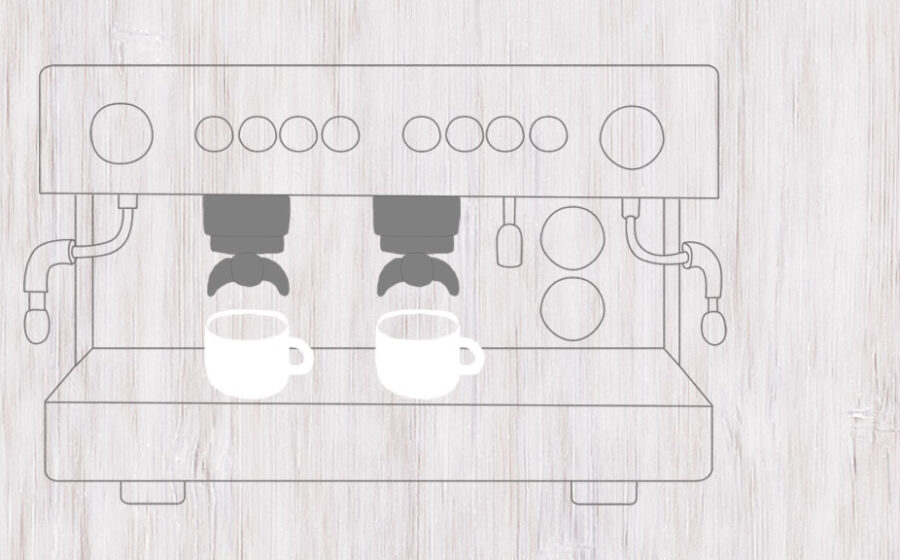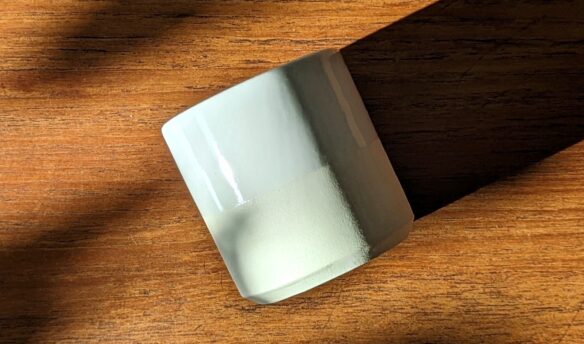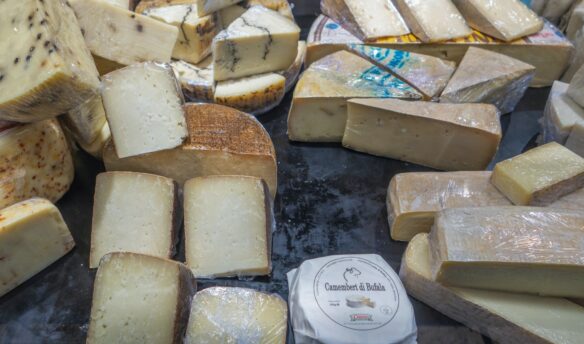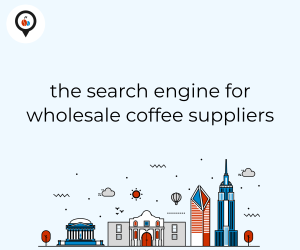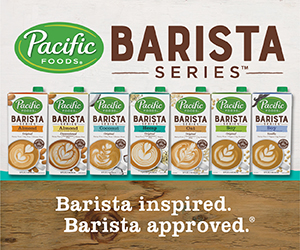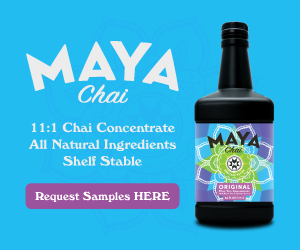[C]hromatic Coffee sits along the southern border of Santa Clara at the junction of two major roadways—and major water sources. Chromatic Coffee lies in a region of Santa Clara County that receives a blend of well water and water from the Santa Clara Valley Water District. Numbers for total dissolved solids (TDS) typically hover around 420 ppm, with readings reaching as high as 480 ppm. Water that “full” of dissolved salts and metals presents a range of challenges for roasting and brewing. (More on the chemistry of water and coffee here.) But the staff at Chromatic has embraced their local tap and turned water treatment into an opportunity to showcase their coffee knowledge by pairing different water and roast profiles. To get the scoop, I chatted with Chromatic CEO James Warren, VP and head roaster Hiver van Geenhoven, and retail director Otessa Crandell.
WATER IN: Without any treatment, water coming from the tap at Chromatic Coffee is about 420 ppm total dissolved solids. Chromatic cares most about calcium and magnesium, which latch onto flavorful compounds in coffee and pull them into the water during brewing. Average concentrations* of calcium are 18 ppm and 10 ppm for magnesium.
FILTRATION: How do you get from 420 ppm to the water profiles you actually want? Filtration. Several stages of it. Chromatic first uses a sediment filter and several carbon filters. Then the pre-treated water goes through a reverse osmosis process, removing all dissolved minerals from the water and resulting in distilled water. From here, water goes through another carbon filter, then on to a series of valves that reintroduce the desired concentrations of calcium and magnesium. (Read more about filtration options for the café here.)
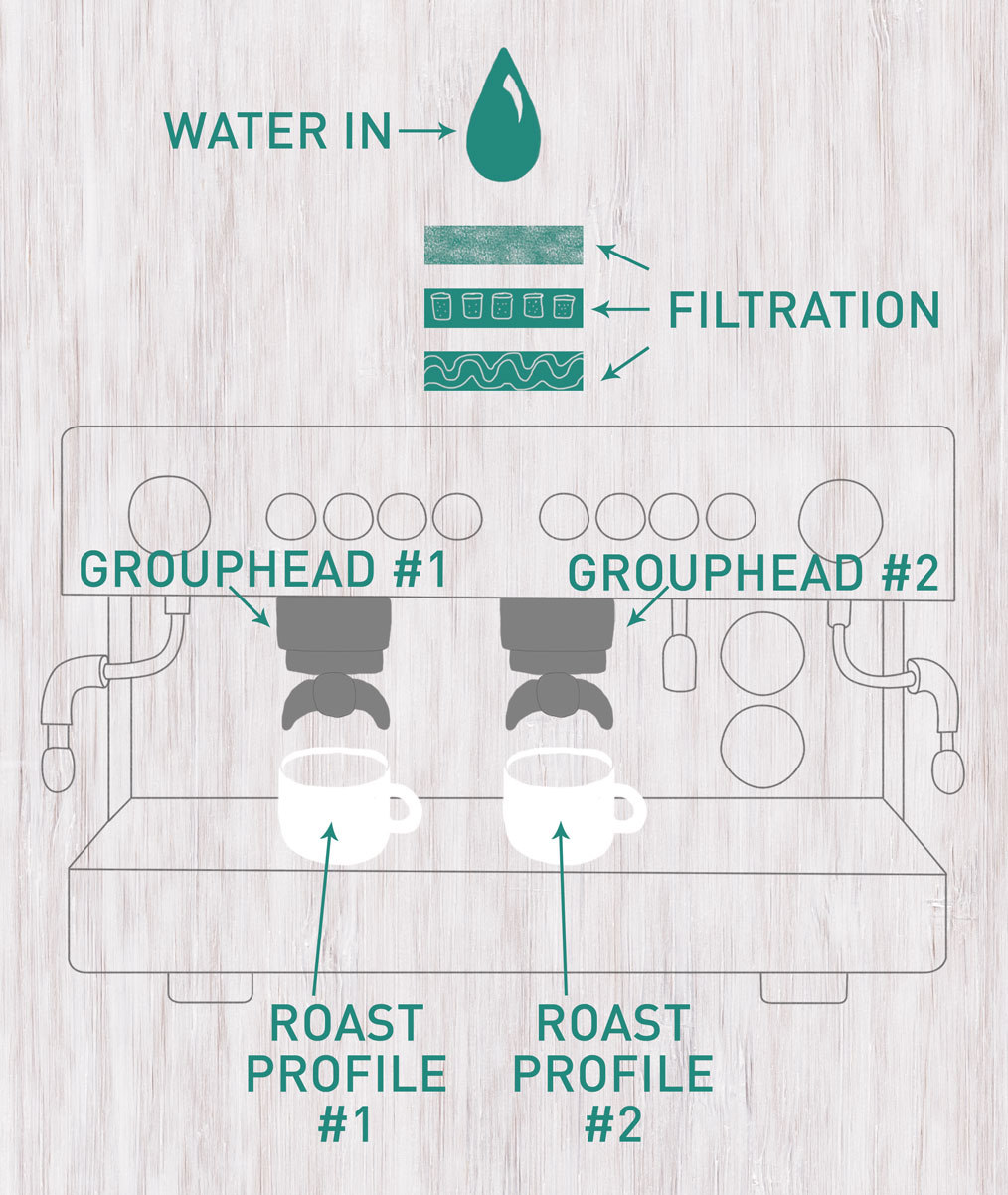
GROUPHEAD #1: This grouphead gets water that’s 35 ppm TDS and has a calcium (Ca2+) to magnesium (Mg2+) ratio of 1:2.
ROAST PROFILE #1: Chromatic uses their specially branded Radio roast for the low TDS water (a rotating, single-origin Ethiopian). Lighter roast coffees have less water-soluble content than darker roasts, says van Geenhoven. The faster, more aggressive roast style is intentionally paired with the 35 ppm TDS water; fewer dissolved solids means more room to bring in water soluble compounds from the coffee, highlighting the fruity and enzymatic notes of this roast. Chromatic also uses this full-bodied espresso for their flat white. Use this roast with the other grouphead? The higher TDS water results in an extraction that’s flat, undeveloped, and has the “cereal” taste of a bad light roast.
GROUPHEAD #2: This grouphead gets water that’s 150 ppm TDS and has a calcium (Ca2+) to magnesium (Mg2+) ratio of 1:2. This is also the water used throughout the rest of the café for batch brewing, americanos, pour-overs, etc.
ROAST PROFILE #2: While a lighter roast pairs well with low TDS water, a slightly darker roast is best suited for a “fuller” water. Gamut is Chromatic’s flagship espresso roast and is dialed in for 150 ppm water. With more developed sugars, the higher TDS water facilitates a slower extraction, yielding a balanced cup without the bitter components that would extract if you put the same roast on the other grouphead. Chromatic pairs this roast with cappuccinos and lattes. Gamut is a blend of Central American, South American, and African coffees.
*Concentrations approximated from City of Santa Clara 2016 Annual Consumer Confidence Report.
—Ellie Bradley is Fresh Cup‘s associate editor.

